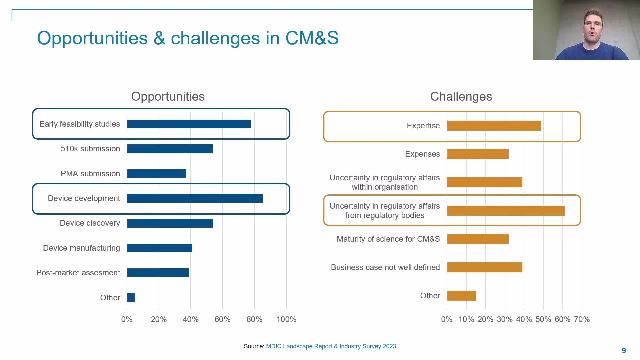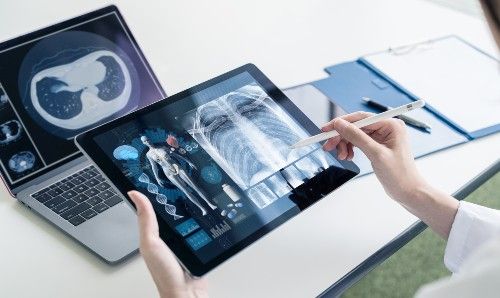What Is In Silico Medicine?
In silico medicine is the use of computational models and simulations to develop medical devices and treatments. These simulation models aim to replicate the anatomy and physiology of the human body as well as its interaction with medical devices, enabling the design, testing, and validation of new medical devices and treatments. Overall, in silico medicine enables medical device manufacturers to shorten the product development cycle of new medical devices and treatments without compromising their quality and safety.
Key Points
- In silico medicine uses computational models and simulations to replicate human anatomy and physiology.
- Virtual human models can be used in the design, testing, and validation of new medical devices and treatments.
- Manufacturers using in silico medicine benefit from an accelerated R&D cycle while ensuring the quality and safety of their products.
Types of In Silico Medicine Models
In silico medicine models can be broadly categorized into knowledge-driven, data-driven, and surrogate models:
- Knowledge-driven models are built on established scientific principles, such as physics and biology, and include methods such as partial differential equations. These models are highly interpretable but can be complex and may not capture unknown behaviors.
- Data-driven models rely on machine learning and statistical techniques to identify patterns in large data sets. They are powerful for prediction and pattern recognition but often require extensive data and can lack transparency.
- Surrogate models serve as simplified approximations of more complex simulations, offering faster computation for tasks such as optimization and sensitivity analysis, though they may trade off some accuracy and are typically valid only within specific parameter ranges.

Computational modeling and simulation workflow for in silico medicine.
Developing In Silico Medicine Applications with MATLAB and Simulink
You can leverage in silico medicine in the research and development of new medical devices and treatments with MATLAB® and Simulink®. For medical devices, Simulink and Simscape™ enable you to create virtual models of human organs such as lungs, kidneys, and hearts as well as cardiovascular and cardiopulmonary systems. You can use these models to design, test, and validate physiologic closed-loop controls in medical devices such as ventilators, dialysis machines, pacemakers, insulin pumps, infusion pumps, insufflators, and anesthesia machines. Likewise, MATLAB enables you to create knowledge-driven models as well as data-driven AI and statistical models of virtual humans and organs based on empirical patient data. Ultimately, the suitability of each method depends on the specific context of use in which it is applied.

In silico medicine model of a physiologic closed-loop control system (medical ventilator with a patient model) simulated in Simulink. (See model.)
Challenges and Limitations of In Silico Medicine
In silico medicine offers powerful tools for the design, testing, and validation of medical devices, but it also faces some challenges and limitations. One major issue is the difficulty in accurately modeling the complexity and variability of human physiology, which can lead to oversimplified or nongeneralizable results. Furthermore, if models are trained on nonrepresentative data, they may not perform well across diverse patient populations. Therefore, in silico medicine models also require rigorous validation against experimental or clinical data, which is often scarce or inconsistent due to lack of empirical data. Additionally, high computational demands and integration challenges with existing workflows can pose technical barriers. Although regulatory frameworks for in silico methods are still evolving, there has been recent progress in guidelines for credibility assessment by the FDA.
Future Directions of In Silico Medicine
The future of in silico medicine for medical devices is marked by rapid innovation and growing integration into healthcare. Emerging trends include the rise of personalized medicine and in silico clinical trials, which aim to reduce reliance on traditional testing by using virtual patient models. Advances in AI, machine learning, and multiscale modeling are enhancing the precision and scope of simulations, while cloud-based platforms and digital twins are making these tools more accessible and dynamic. Regulatory bodies are also evolving to accommodate these technologies, paving the way for broader adoption. These developments are expected to accelerate device innovation, reduce clinical trial costs, improve safety and efficacy, and ultimately lead to more efficient and personalized healthcare delivery. There are already several examples of leading medical device manufacturers successfully leveraging in silico methods in MATLAB and Simulink to develop their next-generation medical devices and treatments.
Customer Success Stories
Simulation Models
FDA Resources
Examples and How To
See also: medical devices

